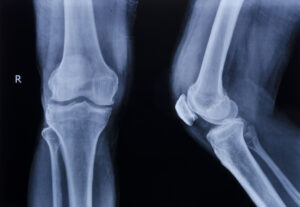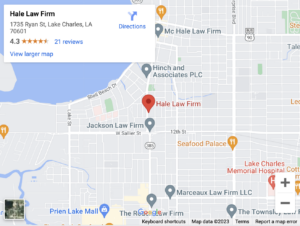
When you break a bone, the circumstances and severity of the break can drastically impact your long-term recovery rate. Significant breaks may never heal entirely, often resulting in long-term chronic pain and reduced mobility.
That said, even minor broken bones can cause you to miss a significant amount of work. And any medical bills and missing wages you may face add to the heavy impact a broken bone has on your quality of life.
Read on to learn more about how and when bones break, the consequences of breaking a bone, and how to obtain compensation for the damages you incur as a result of the break.
How Do Bones Break?
Bones are composed of layers of bone tissue. At the center of the bone is the marrow, followed by spongy tissue, compact tissue, and the outer periosteum. This outer layer holds blood vessels and nerves.
A broken bone can impact any of the four layers of bone tissue. When a bone breaks, other tissues, like the nerves, muscles, and organs, can be injured as well. Bones are a living part of the body — they are constantly in a state of flux, breaking down old tissue and forming new.
Just like any part of the body, bones can be healthy or unhealthy. The general strength and health of a bone is often referred to as “bone density.” Many factors impact a person’s bone density, including nutrition, exercise, and hormones.
What Are Common Causes of Broken Bones?
Bones break for three main reasons: trauma, osteoporosis, and overuse.
When an accident results in a broken bone, the reason is typically trauma.
Some of the most common situations that lead to a broken bone include the following:
- Car accidents
- Sports injuries
- Falls
- Assault
No two accidents produce the same results. For that reason, how a bone is broken and the long-term implications for healing depend on several factors: the specifics of the accident, how the bone was broken, and the break’s impact on other organs.
What Types of Broken Bones Can a Person Suffer?
The medical term for a broken bone is a bone fracture. Any break to the bone is a fracture, but there are many types of fractures. Fractures are often described simply by referencing the specific bone impacted, such as a clavicle or rib fracture.
Fractures can also be diagnosed by pattern or cause.
Pattern Fractures
A pattern fracture diagnosis refers to the appearance or shape of the break. The fracture’s shape is important because it impacts the type of treatment and long-term healing outcomes.
There are two main types of pattern fractures: straight lines and fractures that are not straight lines.
Straight-line fractures take three forms:
- Transverse fracture – runs horizontally to the direction of the bone
- Longitudinal fracture – runs in the same direction as the bone
- Oblique fracture – cuts diagonally across the bone at an angle
In general, bone fractures that occur in a straight line have a greater likelihood of healing without complications. There are, however, multiple types of pattern fractures that are not straight-line fractures.
Some of these include the following:
- Comminuted fracture – broken in multiple places
- Segmental fracture – broken in multiple places with a separated segment
- Spiral fracture – bone is twisted, leading to a spiral-shaped fracture
- Greenstick fracture – crack along the side of the bone, common in children
Of all fracture types, comminuted and segmental fractures tend to be the most serious. They are typically caused by significant trauma, like a serious car accident, and require surgery and recovery times that last a year or longer. Even after that, though, individuals often face long-term issues like chronic pain or reduced mobility.
Causal Fractures
The causal diagnosis of a bone fracture is concerned with how the trauma impacts the bone.
When fractures are diagnosed by cause, there are three main types of diagnoses:
- Stress fracture (hairline fracture) – a small crack in the bone
- Buckle fracture – compression fracture caused by the bone buckling
- Avulsion fracture – a piece of bone attached to a tendon or ligament is pulled away
Causal fractals usually have a direct cause related to use rather than trauma and are most common in children and athletes. They are also typically less severe and have shorter recovery times than pattern fractures.
In most cases, a broken bone sustained in an accident results in a pattern rather than a causal fracture.
What Are the Signs of a Broken Bone?
Bone fractures can range in severity from a tiny crack to significant damage. In the most severe accidents, the bone may protrude from the skin or cause a body part to be so obviously misshapen that it’s clear a bone is broken.
However, broken bones aren’t always easily identified. It can be difficult to tell by pain alone whether a bone has been fractured.
Some of the most common signs of a broken bone include the following:
- Pain
- Reduced mobility
- Altered appearance
- Bruising
- Tenderness
- Redness
- Swelling
Allowing a broken bone to go untreated can lead to complications. If a fractured bone is allowed to heal without being properly set by a doctor, it can re-fuse incorrectly and lead to severe long-term pain. Any time a broken bone is suspected, the injured individual should immediately consult a medical professional.
How Can You Obtain Compensation for a Broken Bone?
Bone fractures can lead to high medical bills and lost wages. They can also have a long-term impact on finances, especially if long-term pain issues leave you unable to return to work.
It’s possible to experience more than just the pain and suffering caused by the initial injury, though. Bone fractures that don’t allow for a full recovery can also seriously impact the quality of life of the injured person and their loved ones.
When a broken bone is caused by another person, a personal injury lawyer can help you file a claim seeking compensation. As a result, you can be reimbursed for all financial and emotional costs of the injury.
To recover compensation, a lawyer builds a case proving how the other person’s negligence led to the injury. For example, if the broken bone was the result of a car accident, a lawyer will build a case against the other driver, and compensation for your injuries may come from that driver’s insurance company.
An experienced personal injury lawyer can significantly help your finances when you experience a broken bone. Contact Hale Injury Lawyers today to schedule a free consultation with an experienced personal injury lawyer at (337) 888-4253.

